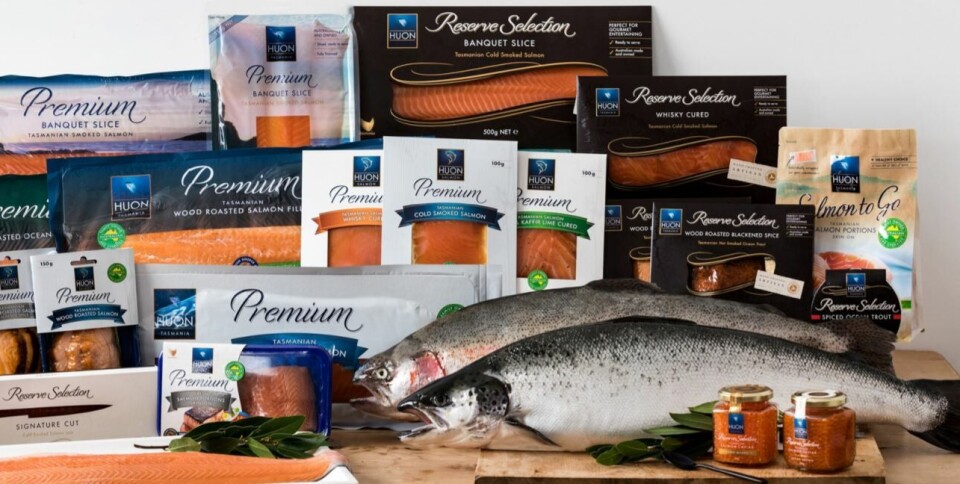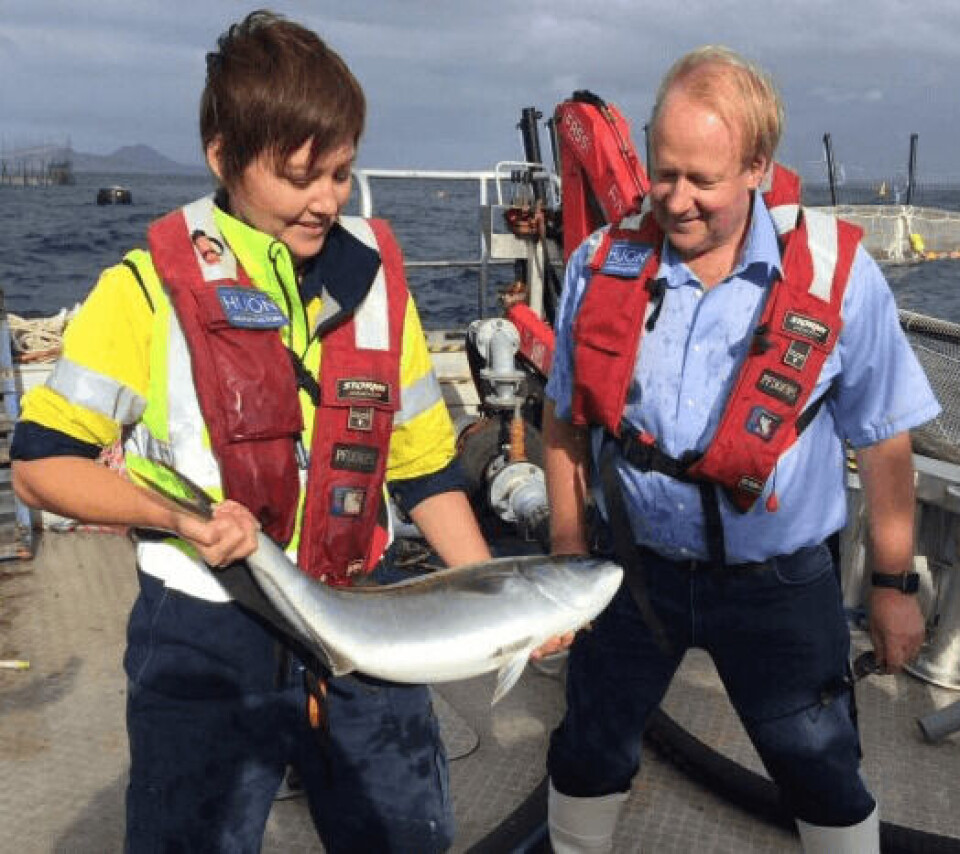
Huon profits stung by jellyfish
Tasmanian salmon farmer Huon Aquaculture Group has reported a fall in revenue, profit and harvest volume for the last six months of 2018 – the first half of the company’s financial year - because of deteriorating environmental conditions, and in particular a jellyfish bloom.
Huon’s revenue for the period was AU$136.3 million, 20% lower than the $170.5m made in the same period in 2017, on a harvest of 9,019 tonnes, a 29% drop on the 12,693 tonnes harvested in the last six months of 2017.
Net profit after tax was down just 4% to $26.4m because supply shortages and a continued growth in demand pushed prices up in Australia, where Huon sold 94% of its harvest. The overall average price received during the half increased 13% to $15.11/kg on the previous corresponding period.

Challenging conditions
Huon chief executive and managing director Peter Bender noted that the decline in both sales and profitability reflected the impact of the extremely challenging operating conditions in the 2017/18 summer. This not only reduced the tonnages available for harvest but also the average weight of fish harvested in the first half of FY2019.
“Huon Aquaculture’s disappointing financial performance in the current half highlights the challenges we face every day when working with nature,” said Bender.
“Our job is all about preparing for those events that are beyond our control and managing risk. All the decisions we have taken in recent years are about building both capacity and resilience within the company. This ensures we are able to manage through the difficult periods, recover momentum and quickly return the business to where it would have been on our planned growth path.”
Expansion into Storm Bay
In a statement, Huon said its key focus during the half was to continue with its expansion in Storm Bay and to complete construction of the Whale Point Salmon Nursery, both representing in the capacity to increase production. This process commenced during the half with a major rebuild of biological assets reflected in a 17% increase in value of biological assets compared to the previous corresponding period.
“While Huon is now past the worst of the damaging effects from the 2017/18 summer and Huon’s improved performance in the second half will reflect that recovery, production costs remain under pressure due to the secondary impacts on fish health arising from a jellyfish bloom in November/December 2018,” said Bender.
“We have however completed implementation of the majority of our efficiency program which will deliver a sustainable reduction in costs over coming years.”
Huon is expecting a harvest volume of 20,000 tonnes for the 2019 financial year, and at least 25,000 tonnes in 2020. It said it currently has fish in production that will support a 30,000-tonne production in 2021.
Jellyfish bloom
During November 2018 Huon experienced a moon jellyfish bloom, which it attempted to mitigate by keeping the jellyfish away from the fish, including towing the pens slowly through the water to allow the jellyfish to be pushed out through the net.
“This and other mitigation strategies were successfully undertaken from the date of the initial outbreak until the end of December, although not without labour and operational costs,” said Huon in its statement.
“The biological impact as a result of this episode comes from fish mortalities and lost growth. Some of those fish affected by the bloom are now suffering from gill necrosis, a secondary impact from the jellyfish encounter. This has the potential for some residual impact on the survival rates of those fish which will persist until the water temperature cools to c. 15 degrees, at which time gill health will recover.
“At this point the estimated full year impact from the jellyfish bloom is expected to be between $8 million and $10 million.”
Diversifying into Yellowtail
Huon is continuing to diversify into Yellowtail Kingfish on both the east and west coasts of Australia. It has a licence to operate a 2200-hectare site 60km west of Geraldton in Western Australia, but will undertake detailed monitoring before committing capital.
It has decided to conclude at Yellowtail Kingfish trial at Port Stephens in New South Wales. Huon said the trial demonstrated the viability of farming Kingfish commercially in a high energy, warm water environment off the east coast of Australia.






















































